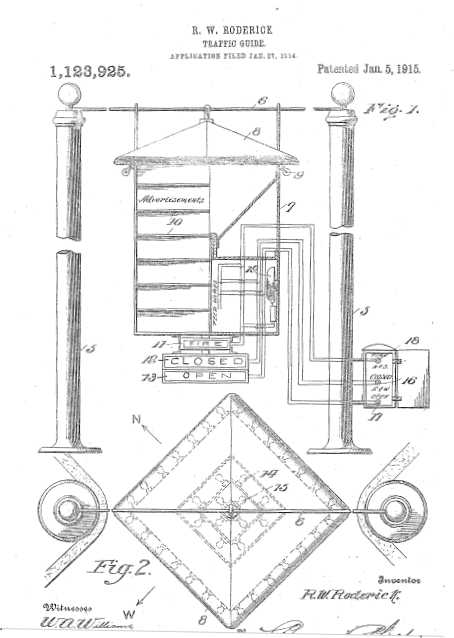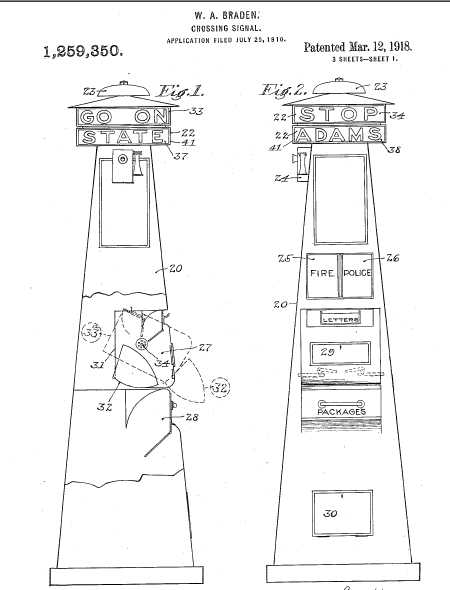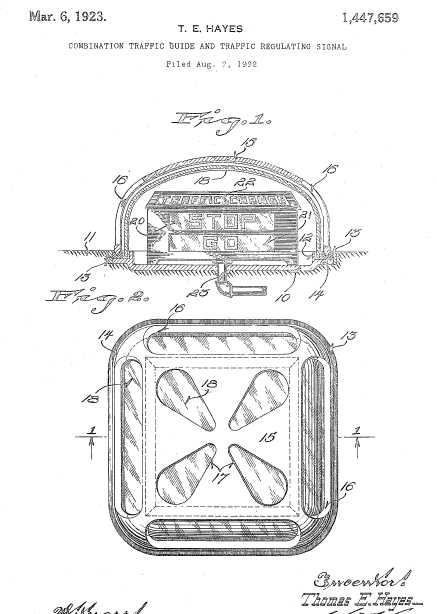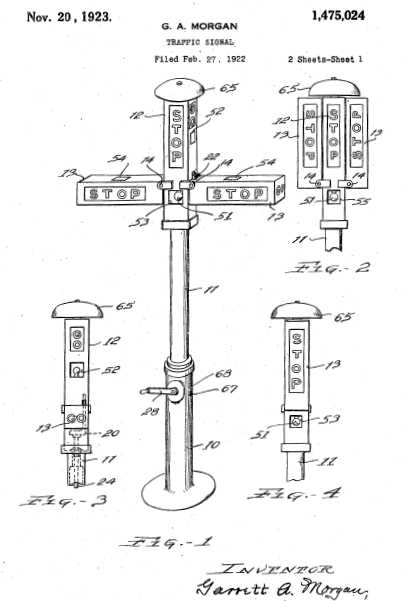Willis Lamm's
|
| History of Traffic Signal Design |
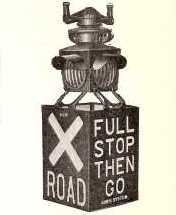
| Imaginations Run Wild! |
| As is the American way, inventors set to work patenting a wide variety of traffic regulating devices ranging from improvements to simple semaphore devices to huge apparatus that covered entire intersections. Most relied on cables and pulleys or underground crank mechanisms so that traffic police could direct traffic more safely from the corners of intersections. A few had automatic capabilities. Here are just a few examples. |
Click on a drawing to bring up a full size view in a new window.
|
Out of hundreds of traffic control ideas, a few were practical and had commercial application. Here are some examples.
Oscar Erdman envisioned controlling whole downtown sections of streets so that traffic could move in large "blocks." Erdman described a master controller in his patent, applied for in 1915.
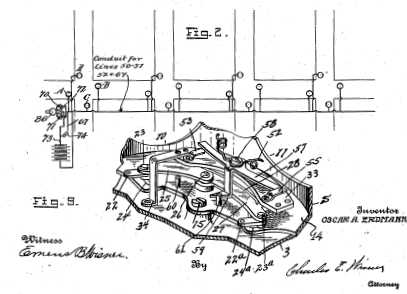
|

